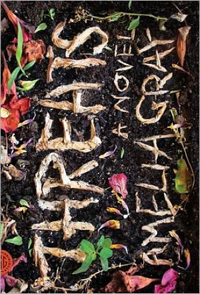I admire Salt Hill because of the strong writing found in each issue and the impeccable production values. I first learned about the magazine at AWP in 2009, when I came across their table and found two issues, one a hardbound book, and the other, a paperback filled with glossy, color pages. In both instances, the design was gorgeous and clean and showed that the editors valued both form and function. Each issue looks different, not radically so, but enough to get the reader’s attention and in each issue there is always something that stuns me. Salt Hill 28 did not disappoint in this regard. Laura Eve Engel’s, “For You Out of Soft Materials,” is one of those poems I loved starting with the title, all the way through the last line. There is no unnecessary flourish in the language and still each stanza evokes something really interesting. I loved lines like Once I admitted I made my face/for you out of soft materials,/so you’d have a place to put all your fingers and the final stanza, There are all these ways/we can decide not to be very tender. Another standout was the work of H.L. Hix, and “Counterexamples,” with the last line, “You say what we can imagine matters most. I say what we cannot.” “Gown Rain,” by Sarah Rose Etter was as imaginative as I have come to expect from her. The sky is raining gowns, you see, an unstoppable downpour of fabric. The writing is as strong as the premise and the ending is both satisfying and unsettling. The strongest work in a very strong issue was, Maile Chapman’s exceedingly smart “Foreign Wedding.” There’s a woman, likable in her unlikability, attending a foreign wedding, not connecting to anyone, just out of a marriage, having awkward encounters as she takes in France, and you think with all that you know where the story is going. “Foreign Wedding,” is not going there and the ending is not only unexpected, it is quite chilling. The issue also contains art and an interview with Dana Spiotta, author of Stone Arabia.
Have you read Salt Hill 28? What did you think? What pieces stood out to you? Why? Why is Ben Mirov’s “Destruction Manual” oriented differently? Did some of the art disturb you?
Let’s talk in the comments.


 Threats
Threats

 “This book threw me to the floor, naked and racist, desperately gasping for air. A work that could truly only have come from [author’s name]’s extended pregnancy.” – Harper’s
“This book threw me to the floor, naked and racist, desperately gasping for air. A work that could truly only have come from [author’s name]’s extended pregnancy.” – Harper’s